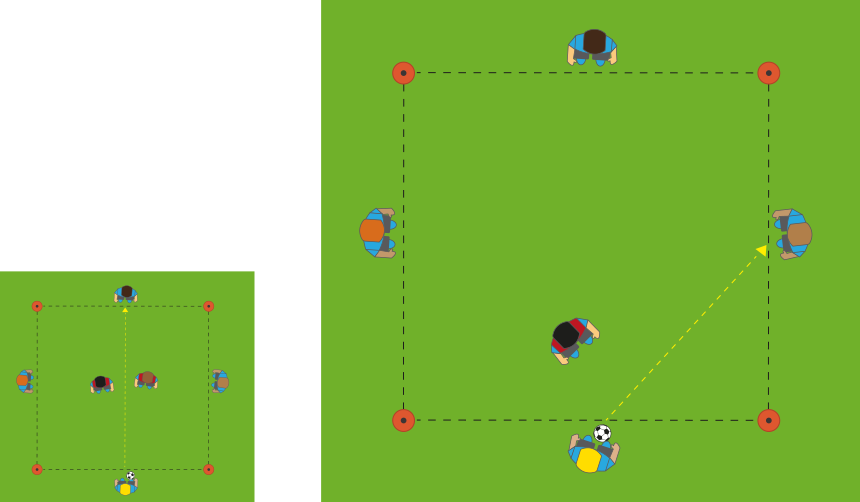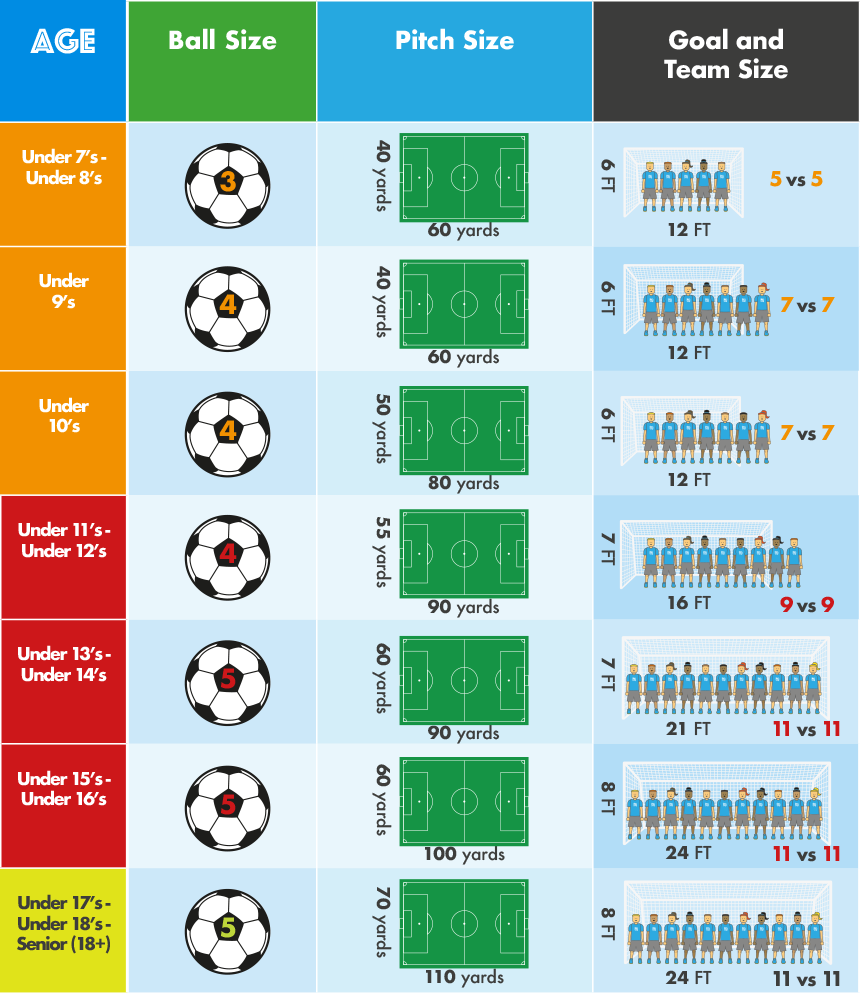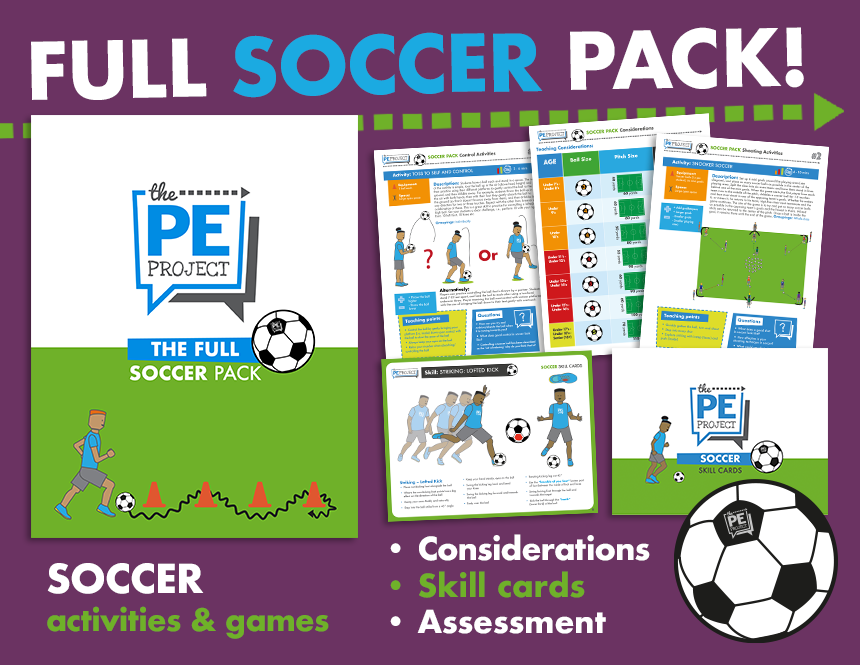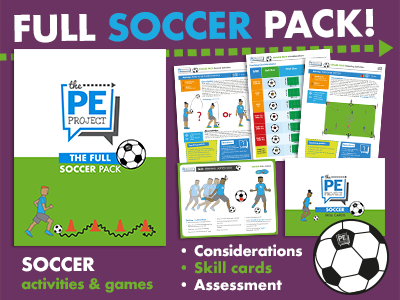When teaching Soccer in Physical Education lessons, it is helpful to have a range of activities, teaching models and styles in the toolbox to help ensure students make great progress. Soccer lessons can be delivered in a range of ways depending upon the age, group size, resources available and your level of knowledge of the game.
If teaching lower Elementary (Primary/KS1) you may want to opt for more cooperative group activities where students can explore the different skills without the pressures of any defenders. Slowly you can then begin to bring defenders into whole-group actvities. For upper Elementary (Primary/KS2) students can experience a range of competitive, cooperative, and small-sided games (5-a-side/7-a-side). Once students move into Middle-School (KS3) and High-School (KS4 & 5) this is where students can begin to experience larger-scale (9-a-side) and full-scale (11-a-side) versions of the game. A great way to do this would be using a ‘Teaching Games for Understanding’ model.
Below are a few Soccer activities, example skill card and teaching considerations taken from the ‘Full Soccer Pack’ that you can use in your lessons.
Description: Students have a soccer ball each and must respond to the signals (colored cones) that are held up by the teacher. The signals are: Red Cone = Stop with foot on top of the ball; Orange Cone = Change direction - perform a change of direction move using different parts of your foot Green Cone = Go (dribble around the space, avoiding bumping into each other) Blue Cone = Show Off perform your best soccer dribbling skills).
To progress, teacher can challenge students by holding up two cones at a time e.g., Red and Orange = Stop and turn with the ball.
Teaching Points
- Every two touches, head up
- Use different parts of your foot
- Accelerate into space
- Practise using strong and weak foot
Questions
- Why should we lift our head up when dribbling?
- How many different ways can you change direction?
Description: Set up four cones to mark out a square. One player is the defender and begins in the middle of the square. The other four players (passers) must stand outside on one-side of the square each (see diagram). Passers must stay on the same side of the square and can’t go inside, and the defender can move freely inside but is not allowed outside. The passers aim is to make consecutive passes in a row without their passes being intercepted. Whilst the defender is trying to intercept as many passes as possible. Passers are allowed to move to improve their passing and receiving angles, but must stay on their side. Change the defender after every intercepted pass, or every 60-90s.
Progression: Same game but now in groups of 6, with 2 defenders in the middle. You can introduce a ‘killer pass’, which is when the ball is passed successfully between two staggered defenders.
Teaching Points
- Use the push pass for most passes (inside of foot)
- Explore passing with inside, instep, and outside of feet
- Step into your pass to improve pace and reduce the risk of getting intercepted
Questions
- What does a good pass look like?
- Which parts of your feet can you pass with?
- Why is stepping into your pass important?
Description: Depending upon the number of goals and space available, split the class into small groups or even partners. Have students take turns shooting at a goal following this sequence of progressions: Stage 1) Stationary shooting - like taking a penalty, have students practice shooting the ball from different angles; Stage 2) Dribble & Shoot - have students dribble for 2-5 touches before taking a shot; Stage 3) Ball rollout - have partner stand behind goal line and roll the ball out to shooter. Shooter controls and shoots the ball with one or two touches; Stage 4) Give and Go - shooter starts by passing the ball to a teammate (standing just outside of the box), and then runs towards the goal where the ball is passed back to them, and then shoots; Stage 5) Turn and Shoot - shooter begins without the ball, in the middle, outside the box. Passer pushes the ball into space, shooter must time their turn, control the ball and shoot.
All of these games can be played with and without a goalkeeper. Shooters should aim to score in one of the four corners of the goal.
Teaching Points
- Non-kicking foot pointing at target area
- Step into each shot
- Practice shooting with different striking techniques
Questions
- What does a good shooting technique look like?
- Where are the best angles to shoot from? Where are the worst?
- Why is shooting quickly important? How many touches might you get in a game?
Skill Cards: When teaching Soccer it can be extremely useful for students to use skill cards to deepen their understanding of skill techniques. For example, when trying to teach students how to execute a Instep Pass/Drive they could use the above skill card to learn about the technique with a partner. Then they can take turns practicing the skill whilst their partner observes and gives feedback. This is an example of a 'Reciprocal Teaching Style' which you can learn more about in our 'Teaching Styles' article.
Teaching Considerations: When teaching soccer to children it is important to consider: What grade are they in? What size ball should they use? The size of the pitch? Team size? We hope that the above table will help you answer those questions quickly and confidently.
The Full Soccer Pack
Would you like more Soccer activities? If so, then this pack is for you! It has been developed by highly-qualified and experienced PE teachers for specialists and non-specialists alike who want to deliver fun, engaging Soccer lessons where students can make exceptional progress.
In the Full Soccer Pack by the PE Project you will find:
- Lots of Soccer activities
- Skill Cards
- Assessment Criteria for Elementary, Middle-School, and High-School
- Plus lots of additional extras like questions, teaching recommendations, differentiation strategies.

















